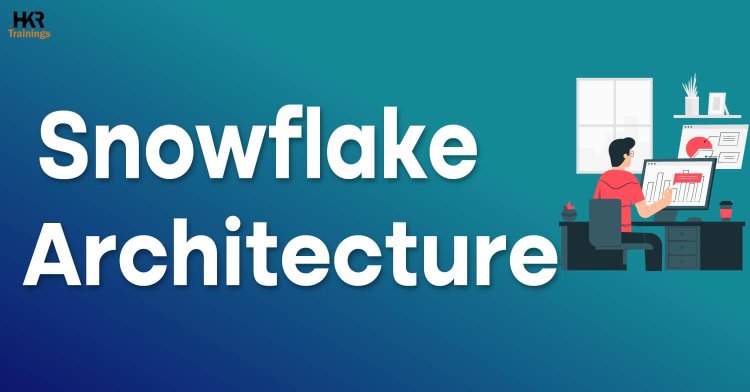Overview of Snowflake Architecture
In this article we are discussing about snowflake architecture, and much more.
Share this Post to earn Money ( Upto ₹100 per 1000 Views )

Snowflake architecture is a new data warehousing model that has been gaining popularity in recent years. This modern approach to managing large amounts of data is designed for the cloud-based era, offering businesses a more efficient and cost-effective way to store and analyze their information.
At its core, snowflake architecture is based on the principles of separation of computing and storage. Unlike traditional data warehouses where storage and processing are tightly coupled, snowflake separates the two functions into distinct layers that can be scaled independently. This enables organizations to better manage their data at scale while reducing costs associated with overprovisioning resources. Additionally, snowflake's unique design allows for faster query performance and improved security features.
Snowflake architecture is a cloud-based data warehousing architecture that is designed to handle large-scale data processing and analytics workloads. It provides a flexible and scalable solution for storing, processing, and analyzing structured and semi-structured data.
Become a Snowflake Certified professional by learning this HKR Snowflake Training !
The key characteristic of Snowflake architecture is its separation of storage and compute resources. In traditional data warehousing systems, storage and compute are tightly coupled, which can lead to scalability and performance challenges. However, Snowflake separates these two aspects, allowing them to scale independently.
Here are the main components of the Snowflake architecture:
Snowflake Database: The core component of Snowflake is the data warehouse, which is composed of multiple databases. Each database is an isolated environment that can contain tables, views, and other database objects.
Storage Layer: Snowflake uses a scalable and distributed cloud storage system to store data. It takes advantage of the elastic storage capabilities of the underlying cloud platform (such as Amazon S3 or Microsoft Azure Blob Storage) to handle large volumes of data.
Compute Layer: The compute layer in Snowflake is responsible for processing queries and performing analytics tasks. It consists of virtual warehouses, which are clusters of compute resources that can be scaled up or down based on the workload requirements. Virtual warehouses allow for concurrent query execution and workload isolation.
Metadata Manager: Snowflake maintains comprehensive metadata that describes the structure and organization of the data stored in the storage layer. The metadata manager keeps track of metadata such as table schemas, views, access controls, and query history.
Query Processing: Snowflake employs a unique approach to query processing called "Multi-Cluster Shared Data Architecture." It automatically optimizes query execution by dynamically allocating resources across multiple compute clusters to parallelize and speed up data processing.
Data Sharing: Snowflake supports data sharing between different Snowflake accounts, enabling organizations to securely share data with external parties, such as customers or partners, without the need for complex data pipelines or data copies.
Security and Access Control: Snowflake has built-in security features to ensure data protection. It provides granular access controls, encryption at rest and in transit, and compliance with various industry standards.
Top 30 frequently asked snowflake interview questions & answers for freshers & experienced professionals
Conclusion:
In conclusion, Snowflake Architecture is a game-changer for organizations looking to optimize their data warehousing operations. Its unique separation of storage and compute resources enables businesses to access and analyze huge volumes of data, while reducing costs and increasing efficiency. With its cloud-native design, Snowflake offers unparalleled scalability and flexibility that traditional on-premise solutions simply cannot match. Whether you're a small startup or a large enterprise, Snowflake's architecture has something to offer. So if you haven't already made the switch to Snowflake, now is the time to do so and unlock the full potential of your data.
If you want to know more about snowflake architecture, visit this blog Snowflake Architecture !







